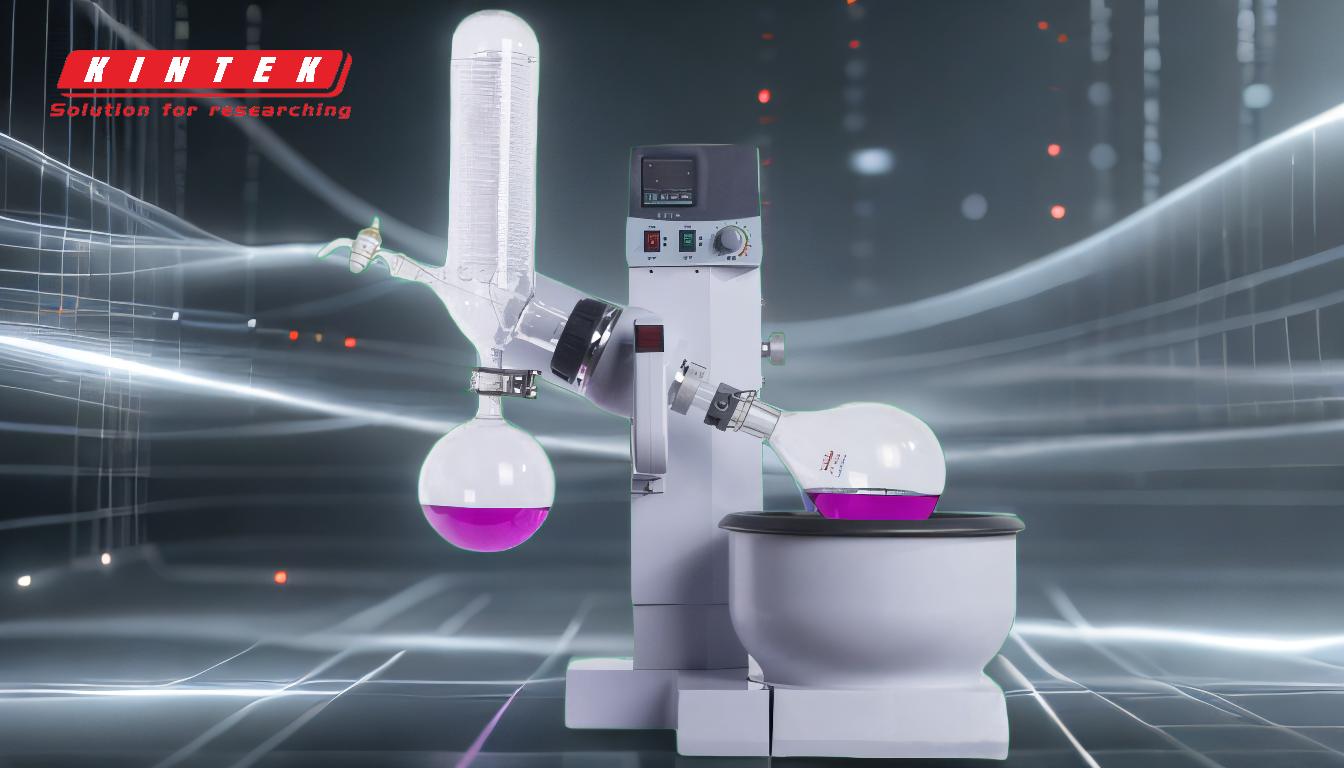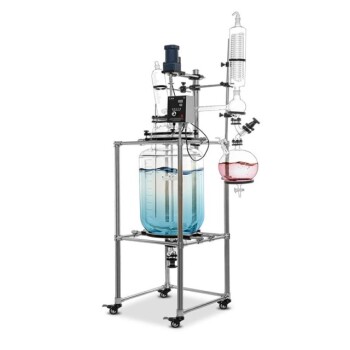Rotary evaporators are essential tools in laboratories for solvent removal and concentration, but they come with inherent hazards that require careful attention to ensure operator safety. The primary risks include entanglement with rotating parts, implosions due to flawed glassware, explosions from concentrating unstable impurities, and exposure to hazardous chemicals or vapors. Proper safety measures, such as using personal protective equipment (PPE), ensuring secure glassware, and managing reactive materials under vacuum, are critical to mitigating these risks. Additionally, advanced safety accessories like coated glassware, protective shields, and motorized lifts can further enhance safety during operation.
Key Points Explained:

-
Entanglement with Rotating Parts
- Rotary evaporators have rotating components, such as the evaporation flask and condenser, which can pose entanglement risks.
- Loose clothing, hair, necklaces, or jewelry can get caught in these parts, leading to severe injuries.
- Prevention: Operators should tie back long hair, avoid wearing loose clothing or accessories, and ensure all rotating parts are shielded or guarded during operation.
-
Implosions from Flawed Glassware
- The vacuum system in rotary evaporators creates low-pressure conditions that can cause glassware to implode if it has flaws or cracks.
- Implosions can result in flying glass shards, posing a significant risk to operators and nearby personnel.
- Prevention: Inspect glassware for defects before use, use coated or reinforced glassware, and ensure all connections are secure to maintain vacuum integrity.
-
Explosions from Concentrating Unstable Impurities
- Concentrating certain chemicals or unstable impurities under vacuum can lead to violent reactions or explosions.
- Air-reactive materials, in particular, can ignite or explode if air leaks into the system.
- Prevention: Avoid concentrating unstable or reactive chemicals, and use additional caution when working with air-sensitive materials. Ensure proper ventilation and use explosion-proof equipment if necessary.
-
Exposure to Hazardous Chemicals and Vapors
- Rotary evaporators often handle solvents, acids, and other hazardous chemicals, which can release harmful vapors during evaporation.
- Prolonged exposure to these vapors can cause respiratory issues, skin irritation, or other health problems.
- Prevention: Use the equipment in a well-ventilated area or under a fume hood. Wear appropriate PPE, such as gloves, goggles, and lab coats, to minimize exposure.
-
Thermal Hazards from Heating Elements
- The water or oil bath used to heat the sample can cause burns if not handled properly.
- Overheating the solvent beyond its boiling point can lead to rapid boiling or splashing, increasing the risk of burns or spills.
- Prevention: Set the bath temperature below the solvent's boiling point, use thermal gloves when handling hot components, and ensure the bath is securely positioned.
-
Mechanical Hazards from Improper Assembly
- Improperly assembled components, such as loose flasks or bump traps, can detach during operation, leading to spills or equipment damage.
- Prevention: Securely fasten all glassware with clips, use bump traps to prevent contamination, and regularly inspect the setup for stability.
-
Power Outages and Dry Heating Baths
- Power outages or dry heating baths can cause the system to overheat or fail, potentially leading to accidents.
- Prevention: Use advanced safety features like motorized lifts and automatic shutoff procedures to mitigate these risks.
-
General Safety Best Practices
- Always follow the manufacturer's guidelines and standard operating procedures (SOPs) for rotary evaporator use.
- Regularly inspect and maintain the equipment to ensure it is in good working condition.
- Train all operators on proper usage and emergency response procedures.
By understanding these hazards and implementing the appropriate safety measures, operators can significantly reduce the risks associated with rotary evaporator use and create a safer laboratory environment.
Summary Table:
| Hazard | Prevention Measures |
|---|---|
| Entanglement with rotating parts | Tie back hair, avoid loose clothing, shield rotating parts |
| Implosions from flawed glassware | Inspect glassware, use coated/reinforced glassware, secure connections |
| Explosions from unstable impurities | Avoid concentrating reactive chemicals, ensure ventilation, use explosion-proof gear |
| Exposure to hazardous chemicals | Use fume hoods, wear PPE (gloves, goggles, lab coats) |
| Thermal hazards from heating | Set bath temperature below boiling point, use thermal gloves, secure bath position |
| Mechanical hazards from assembly | Secure glassware with clips, use bump traps, inspect setup regularly |
| Power outages and dry heating baths | Use motorized lifts, automatic shutoff procedures |
| General safety best practices | Follow SOPs, inspect/maintain equipment, train operators |
Ensure your lab's safety with expert advice—contact us today to learn more about rotary evaporator safety!










